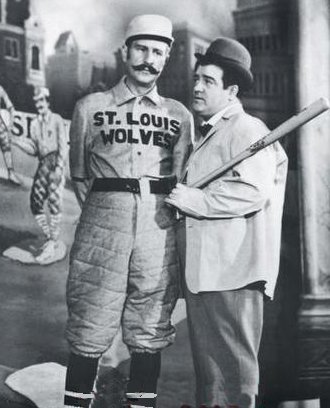Organizational Visualization: who’s on First, Who does What around here and why Doesn’t HR know the answer?

At a time when being connected and being visual is more important than ever why is it that so many organizations look like a modern day version of an Abbott and Costello routine. As funny as that might be it is just sad that too often we still don’t appreciate how people connect and work together or how difficult that can be to comprehend in many places. Just think for a minute about formal and informal networks within your workplace. As John Seely Brown of Xerox PARC fame noted many years ago in a study of the workplace that more often than not you will find in many organizations that “their view of work can often overlook or even oppose what it takes to get the job done.” What goes missing too often in their impression is the valuable “work around practice” that is what is really required to get the job done.
While giant leaps have taken place to improve organizational communications and knowledge sharing with internal collaboration and project management platforms such as Sharepoint and others have done wonders to address this problem, too often the easiest questions about who does what remain elusive and unanswered.
A quick look at the HR, Staffing and Recruiting Professionals Forum on LinkedIN will demonstrate that one of the most common refrains of advice for people starting out in HR is to get to “know the key people within the organization” to “communicate”. Great advice but as the next question that most often crops up from someone will often be “where do I get started.”
For many organizations that answer is the organizational chart but sadly its still reflects the type of outdated or rigid and limited information that John Seely Brown referenced in the research done back twenty years ago.
Interactive organizational charts such as the type the Organimi offers can go a long way to addressing the problem but it is also fundamentally about who controls and edits that chart. If you want to make it truly dynamic an org chart need to reflect the organization it maps because it includes the perspective of those people represented on the map. Think about what makes Google Maps or other offerings really valuable. Its not just the fact that the visual info is online but more importantly the numerous contributions of individuals who collectively add photos and information to give you a much more rich and valuable perspective on what the map represents. Org charts need to do the same and organizations that embrace the concept by making the charts democratic in nature will make the whole purpose of this organizational map much more than it can possibly be in a tightly controlled, top down environment. HR needs to facilitate the crowd, share the wisdom and use org charts to map that insight for all to share.
There is risk is loosening up control to be sure. Who will accurately or inaccurately represent their role, knowledge and connections? Does that need to be monitored and controlled and by who? All good questions but if you want to gain more value out of how you map your organization doesn’t it make more sense to get the “on the ground” perspective.
